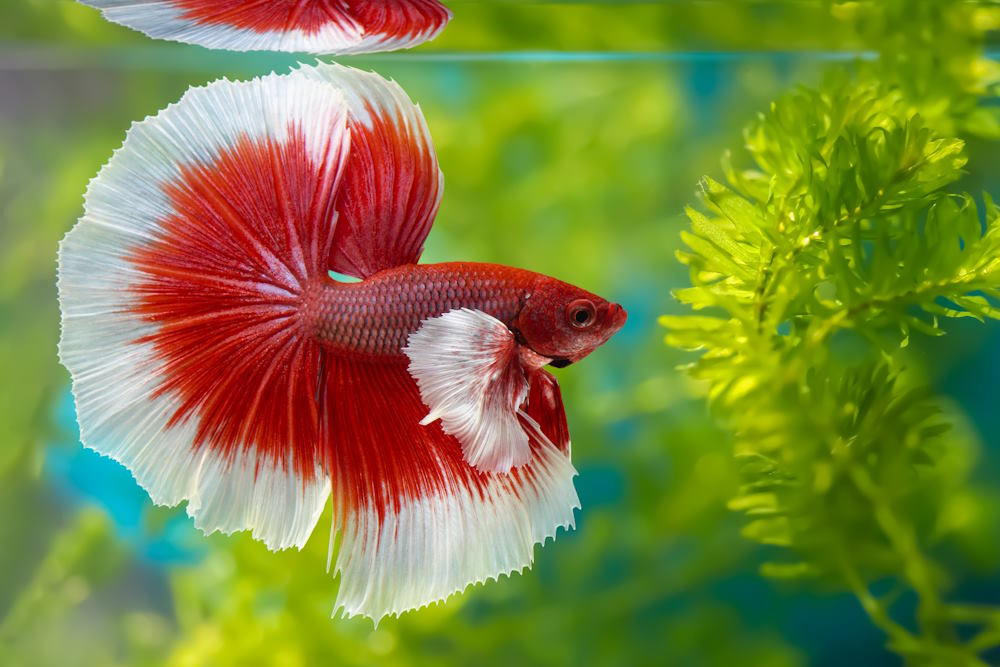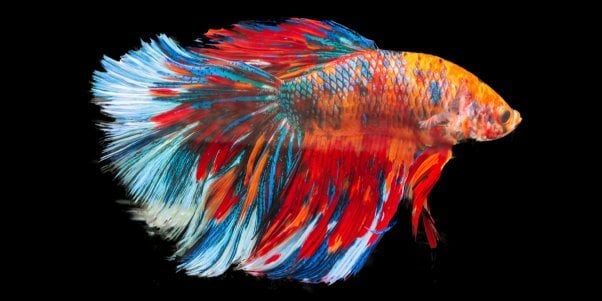Just how to Select the Right Betta Fish for Your Fish tank
Just how to Select the Right Betta Fish for Your Fish tank
Blog Article
Reproducing Betta Fish: a Comprehensive Step-By-Step Overview to Successfully Raising Child Bettas From Eggs to Adulthood
Reproducing Betta fish is a precise endeavor that calls for careful preparation and implementation to guarantee the successful growth of fry from eggs to mature fish. As the male Betta diligently constructs a bubble nest and guards the precious eggs, the subsequent stages of care and shift need attention to information and expertise of finest practices.

Selecting Breeding Pairs
When starting the journey of breeding Betta fish, choosing the best reproduction sets is critical to attaining preferable traits and a healthy lineage - betta fish. The initial step in this procedure is to determine the particular traits you want to boost or preserve, such as color, fin kind, and body form. It is necessary to choose genetically diverse sets to avoid inbreeding, which can lead to health problems and unfavorable features
Evaluate possible reproducing candidates meticulously. A healthy male Betta ought to show dynamic shades, an energetic demeanor, and well-formed fins, while the female ought to likewise present dynamic coloration and a rounded stubborn belly, suggesting preparedness for spawning. Observing the personality of both fish is essential, as hostile or overly reluctant individuals may not reproduce efficiently.
Keeping records of the moms and dad fish's origins can assist you track hereditary traits and potential problems. Inevitably, investing time in the selection procedure will significantly enhance the possibility of producing strong, vivid spawn that satisfy your breeding goals.

Preparing the Breeding Container
Developing an optimal breeding environment is an essential action after picking suitable sets for Betta fish. The breeding storage tank need to be specifically created to supply comfort and stimulate the natural breeding actions of the fish. Beginning with a container dimension of at the very least 10 gallons to guarantee adequate room for both the male and female Bettas.
Keep a gentle filtering system to maintain the water clean while avoiding strong currents that can stress the fish. Furthermore, an air rock can be contributed to provide oxygenation without interfering with the water surface area too a lot.
Temperature level guideline is vital; go for a secure array of 78-82 ° F(25-28 ° C) utilizing a trustworthy heating system. The pH degree should be maintained in between 6.5 and 7.5, and regular water adjustments are needed to guarantee high water high quality.
Include drifting plants or spawning mops to develop concealing areas for the female, while likewise encouraging bubble nest structure by the man - betta fish. Finally, make sure the container is cost-free from sharp designs and any type of possible threats, as the well-being of the fish ought to always be focused on throughout this essential phase my latest blog post of breeding.
The Reproduction Refine
Commonly, the reproducing procedure for Betta fish entails a collection of distinctive and observable actions that suggest preparedness for reproduction. The male Betta begins by building a bubble nest at the water's surface area, which serves as a website for the fed eggs. This nest is crucial, as it supplies a safe setting for the eggs up until they hatch.
When the nest is established, the man like it will certainly show courtship behaviors, such as flaring his fins and exhibiting vibrant colors to bring in the female. The woman, upon sensing the man's preparedness, will certainly react by displaying vertical stripes along her body, signaling her receptiveness.
When the female strategies, the male takes part in a breeding dancing, typically resulting in a welcome referred to as the "spawning." During this embrace, the female releases her eggs, which the male feeds immediately. The fertilized eggs then fall to the bubble nest, where the male thoroughly accumulates and returns them to the nest. Following this, the male assumes obligation for safeguarding the nest and ensuring the security of the eggs till they hatch out, usually within 24-36 hours. This phase is important in the breeding procedure, laying the foundation for effective fry development.
Taking Care Of Betta Fry
Caring for Betta fry requires careful focus to their atmosphere and nutrition to make sure healthy growth and growth. After hatching, Betta fry are exceptionally little and susceptible, demanding a stable and tidy environment.
Feeding Betta fry is similarly crucial. Feed them small quantities numerous times a day, being cautious click resources not to overfeed, which can lead to water quality problems.
Transitioning to Grownup Bettas
As Betta fry mature, transitioning them to adult Bettas is an essential stage that requires careful management of their environment and social communications. This procedure commonly begins when the fry get to around 6 weeks of age, whereupon they can be gradually introduced to a more organized living atmosphere.
To promote this transition, it is vital to ensure that the water specifications-- such as temperature level, pH, and ammonia levels-- are optimal and secure. Grown-up Betta fish grow in warm water (around 78-80 ° F) with a pH of 6.5 to 7.5. Progressively adapt the fry to these conditions to lessen stress.
Social interactions are one more vital variable; man Bettas are notoriously territorial and aggressive. Consequently, it is suggested to different males right into private storage tanks as they develop. Female Bettas can be housed together, but care should be taken to keep an eye on for signs of aggression.
In addition, dietary changes should be made as the fry expand. Incorporate top notch pellets and live foods to support their development and health and wellness. By taking care of these elements efficiently, you can promote an effective transition to adulthood for your Betta fish.

Conclusion
Successful reproduction of Betta fish calls for careful interest to detail throughout the entire process, from picking genetically diverse sets to supplying optimum care for fry. By ensuring suitable breeding conditions and preserving water quality, the likelihood of healthy spawn raises considerably. Additionally, a balanced diet plan and gradual adaptation to grown-up environments are important for the growth and development of Betta fish. Adhering to these actions diligently fosters a flourishing population of Betta fish, boosting both their health and wellness and vigor.
Report this page